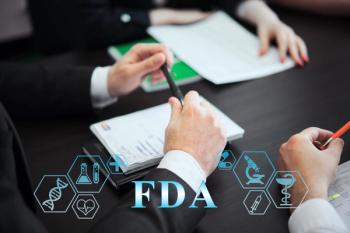
Launching during Lockdown
Immunomedics’ CFO/CBO Usama Malik discusses how a lot of good planning and a little good fortune helped the company to achieve its “virtual launch” amid the coronavirus crisis.
At the end of April, Immunomedics (Morris Plains, N.J), a biopharmaceutical company focused on developing antibody-drug conjugates (ADC) for hard-to-treat cancers, received FDA accelerated approval for its first ADC, Trodelvy (sacituzumab govitecan-hziy). Although COVID-19 was by then in full swing, the company nonetheless pushed ahead with its launch strategy. Thanks to preparations it had begun making in the early days of the encroaching pandemic, it was able to launch Trodelvy within days of the FDA approval.
Immunomedics’ CFO/CBO Usama Malik sat down with Pharm Exec to discuss how a lot of good planning and a little good fortune helped the company to achieve this “virtual launch” amid the coronavirus crisis.
PharmExec: Can you outline how you directed your company towards a “virtual launch” of breast cancer drug Trodelvy during the COVID pandemic?
Usama Malik: I would say it was a combination of having some foresight and some serendipity. Like many others, we started to take some precautionary measures with regard to the coronavirus as early as January, and we moved to a work-from-home model in early March. Between January and March, we did a lot of business continuity planning both internally and with our external partners to understand what the implications of global pandemic could be, how we would address a potential launch into this environment, and how we would ensure access to the drug to patients who really need this drug.
We started by shifting some of our technology roadmap and implemented a number of new tools for the commercial organization, especially the salespeople, as well as account managers. We use the Veeva CRM system and added a number of new plugins and models for conducting virtual sales and virtual meetings. That was combined with other technological initiatives, such as the implementation of a global Microsoft Teams program and the training of our entire salesforce on using video conferencing and corporate social networks for communication.
We started to prioritize our accounts and reallocated the sales force so that they were aligned with these accounts. We identified some of our strongest sales performers and those who have deep industry connections to mentor and coach others. One advantage of a virtual model was that we were able align and assign people on the West Coast to work with people on the East Coast.
We have also invested a lot over the last year, even pre-COVID, in creating a data and analytics platform and that has really paid off in spades. We now generate pretty sophisticated and robust daily reports for the sales force, for management, and for the executive leadership team teams. As early as January, we started pivoting a lot of our marketing dollars to digital and we created a strong digital marketing team.
We also hired a number of people to do inside sales calling. In a normal environment, we wouldn't have hired these candidates, but we thought in a virtual environment, having a team of a dozen or so people just to call accounts and schedule meetings and introduce the product would be beneficial. This paid off in spades as well. So, doing a lot of business continuity planning and scenario planning was helpful and we got lucky in some of our choices as well.
What challenges did you face that you hadn’t expected?
In terms of our launch planning and timeframe, we actually ended up doing as well or better than we expected. We got approval on the product on April 22, and we had products in the channel exactly a week after that. The following week we were on the National Comprehensive Cancer Network (NCCN) guidelines, and had Medicare reimbursement, which then leads to state-by-state Medicaid reimbursement.
Regarding the challenges, it's very difficult at the end of the day to replace the traditional sales model, where personal relationships matter a lot and physical interaction is required. For example, academic medical centers-large centers with large patient populations with triple negative breast cancer-were much more difficult to engage with and penetrate in the first few months of COVID. These centers have stricter guidelines; also, the physicians were working remotely; the P&T committees were not meeting as frequently; the pharmacy and formulation staff weren’t trained. So, there's a lot of work that a salesperson has to do in these large institutions to make sure that the administrative stuff is being taken care of.
Generally speaking, when you launch, the big uptake happens in academic medical centers, but in our case, we saw a significant uptake in the community setting; a lot of clinics in rural areas, in community settings, were still up and running and putting patients on the product. The academic medical centers in the large cities, where the virus was spreading much more rapidly, were working much more slowly and were shutting down. That was a challenge that we didn't anticipate, but the corollary to that was that the community oncologists really drove the adoption of the product in the first couple of months. And over the last four to six weeks, the academic medical centers have come back online and are leading the path again.
How do you think COVID-19 and its aftermath will affect the way you will do business going forward?
I think what the pandemic has done across industries is showcase that technology can be used in an effective way to drive productivity and while still driving good human interaction. With virtual lunches or dinners, we’re able to send the doctors lunch to their offices and get the entire team on a call and have a meaningful discussion for half an hour or 45 minutes. That's very compelling; everyone is paying attention. There’s a lot of focus on creating and generating good content so you can have meaningful conversation. There’s a lot of focus on understanding both the qualitative and quantitative needs of the folks that you're talking to, so you can tailor your conversation based on that data. So, technology is here to stay; it will augment the traditional in-person and face-to-face meetings, which as I noted are also necessary.
To what degree that augmentation happens, I think will be decided on an institution-by-institution, company-by-company basis. The companies leading the way are those that have invested in technology infrastructures; that are capturing data from social media, from SEO, from digital marketing, and from their field force’s interactions with customers.
How has the new way working changed the way you recruit and identify new talent?
Obviously, it’s a very different process; for us, everything has moved to Zoom or to Microsoft Teams. Resumé selection still happens the way it always has; resumés come through the applicant tracking system and you narrow down prospective candidates to a group you want to interview for a particular role. We’re making the effort to not just have telephonic conversation but to have video conversations, because there is an improved level of engagement when can you see the person you are interviewing. We can also have multiple people on a call talking to the same person, which can be an effective way to measure a particular candidate.
It is still much easier to have in-person conversations, of course; it’s still a little clunky to have virtual conversations-you can't always get the nuance on a video call. Picking up those nuances can be important in gauging one candidate against another. If two resumés look exactly the same, how do you identify the qualitative differences between the two candidates? This is a process that we were all going to have to adjust to. But even during COVID, we have continued to hire pretty aggressively, and so far, the experience has been good both for the candidates we have brought in and for the company.
What are Immunomedics’ priorities over the next year?
Our goal is to continue to maximize the value of Trodelvy. We just got approval under FDA’s Accelerated Approval Program for the treatment of adult patients with metastatic triple-negative breast cancer (mTNBC). Just this week we reported that the confirmatory Phase 3 ASCENT study of Trodelvy met its primary endpoint of progression-free survival (PFS), as well as key secondary endpoints in brain metastasis negative patients with mTNBC who have previously received at least two prior therapies for metastatic disease. In the ASCENT study, Trodelvy demonstrated a statistically significant improvement in the primary endpoint of PFS compared to chemotherapy, with a hazard ratio of 0.41 (95% confidence interval (CI), 0.32-0.52). The median PFS for patients treated with Trodelvy was 5.6 months (95% CI, 4.3-6.3), compared to 1.7 months (95% CI, 1.5-2.6) for chemotherapy (p<0.0001). A supplemental Biologics License Application (sBLA) seeking full approval is planned for later this year.
Commercially, under our Chief Commercial Officer, Brendan Delaney’s leadership, we’ve built a very robust organization to initially commercialize triple negative breast cancer. As we hopefully get approval in additional indications, we’ll continue to look at how we scale our commercial organization here in the US for upcoming indications like metastatic urothelial cancer and hormone receptor positive metastatic breast cancer. After the ASCENT data is read out, we'll be able to leverage that for a full filing here in the US but also for a European dossier, sometimes early next year. That will allow us to then potentially get approval for Trodelvy in triple negative breast cancer in Europe. Regarding commercialization in Europe, we'll continue to evaluate our options. We may do it on our own, but it's likely that we may pursue a strategic partnership with a large pharma company that has global scale, the infrastructure and commercial capabilities in various markets around the world, as well as significant development capability and capacity to accelerate Trodelvy’s development plan across multiple new indications.
On top of that, we also have a partnership with Everest Medicines to develop and commercialize Trodelvy for all cancer indications in Greater China, South Korea, and certain ASEAN. That was the largest transaction for a single asset ever done in China and exemplifies our commitment to expand the geographic footprint and clinical use of Trodelvy for the benefit of cancer patients worldwide.
Newsletter
Lead with insight with the Pharmaceutical Executive newsletter, featuring strategic analysis, leadership trends, and market intelligence for biopharma decision-makers.





